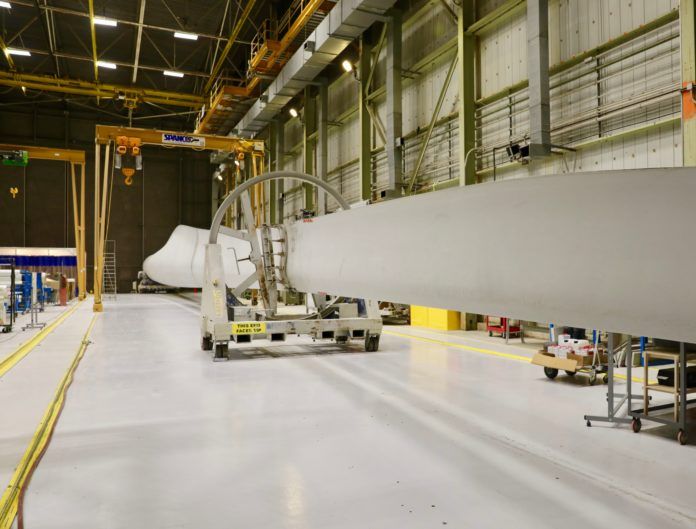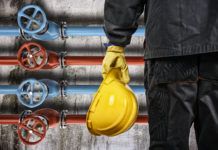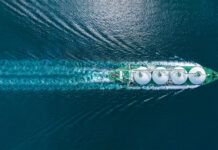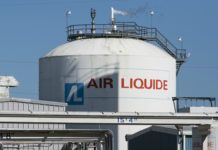LM Wind Power had already forged several crucial alliances by the time it unveiled its new Technology Center for the Americas in New Orleans last November. After all, the international wind turbine manufacturer would eventually need 100 direct and 220 indirect workers to support the facility, in addition to a voluminous 60,000 square feet of manufacturing space at NASA’s sprawling Michoud Assembly Facility.
Still in the early stages of the journey, the TCA facility will ultimately test a variety of new techniques for designing and building wind turbine blades, and support four of LM Wind Power’s largest facilities in Brazil; Canada; Little Rock, Arkansas; and Grand Forks, North Dakota.
TCA Director James Martin says the facility is intended to provide the Denmark-based company with a local presence for its North American customers, adding that the New Orleans site is well-situated to serve the rapidly growing wind power market in the U.S. “This will establish a technical and a customer support footprint, and New Orleans and Louisiana have the best value proposition to support the region and our customers,” Martin says.
A CROSS-FUNCTIONAL APPROACH TO MANUFACTURING
LM Wind Power reached out to Louisiana Economic Development, Tulane University, University of New Orleans and LSU to assist with the ramp up of its workforce—with the end goal of doubling the size of the team through 2019. For its part, Louisiana offered a competitive incentives package, which includes the services of LED’s workforce development program, FastStart. Additionally, LM Wind Power qualified for the state’s Quality Jobs Program.
Once fully operational, the TCA facility will field a diverse team of physicists, engineers, draftspersons and composite technicians, among others. “One of the special things about TCA is that you have manufacturing and design working right next to each other,” Martin says.
Such cross-functional teams are vitally important for driving innovation, which will become increasingly important as the use of wind power becomes more widespread. There are more than 50,000 wind turbines in the field today, and all roads lead to substantial growth for both onshore and offshore applications.
At Michoud, TCA’s technology mission will be to drive down the cost of wind energy and make it more competitive with other forms of energy production. For example, recent work has sought to develop and enhance a jointed turbine blade, created as part of a collaborative project between LM Wind Power and GE Renewable Energy for its Cypress onshore turbine platform. The revolutionary two-piece blade design enables blades to be manufactured at longer lengths, while improving logistics and offering more siting options.
Martin says the longer blades can drive down the cost of electricity, and the proprietary design allows these larger turbines to be installed in locations that were previously inaccessible. “You can deliver the blade to the site in two pieces and join it together with a proprietary technology connection at the base of the tower,” he adds. “GE and LM Wind Power are the first in the wind energy sector to actually bring this to market.”
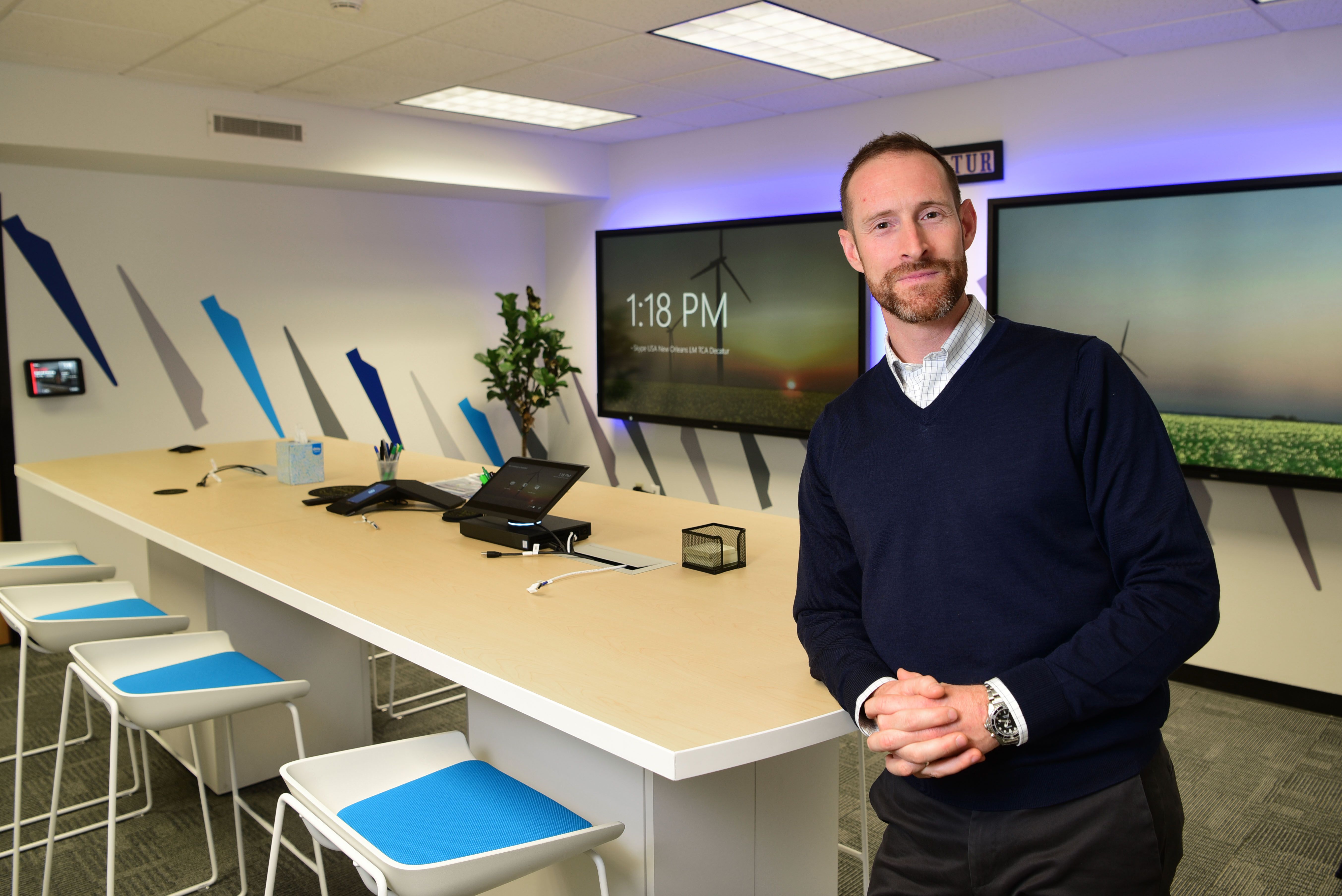
James Martin, director, Technology Center for the Americas. Photo by Cheryl Gerber.
Much of the current research aims to make turbine blades longer and lighter. One of the newer blades created by the company measures 107 meters long, making it the largest blade on the planet.
That’s what makes the NASA Michoud facility ideal for TCA. “The facility is flexible to both short- and long-term contractual arrangements, depending upon the size of the project,” Martin says. “We have a base of operations at NASA, which is the primary building where the engineers and manufacturing technicians are housed, but there’s a very large footprint here (Michoud supported more than 4,000 workers at one time) that we can rent as needed.”
Other research will focus on offshore wind power, aimed at making turbine blades lighter and more durable. Offshore blades tend to be larger than onshore turbines because of the cost of installation, and therefore require more advanced materials and faster tip speeds. “Therefore, you need more advanced aerodynamics and lighter, stiffer materials to enable that,” Martin says. LM Wind Power is using carbon fiber in the blade designs – prevalent in offshore technology – and developing advanced aerodynamics to get more energy out of each turbine.
Michael Hecht, president and CEO of GNO Inc., says the TCA facility is exciting news for New Orleans, as it promotes the use of Michoud as a public/private facility. “We’re not only building the mission to Mars there, we’re hosting some of the most advanced private sector companies in the world,” Hecht says. “As this is the global headquarters for manufacturing and testing for LM Wind Power, there’s an opportunity for New Orleans to become a global leader in the manufacturing and testing of wind turbines.”
The facility represents growth opportunities in advanced manufacturing and energy. “If you consider that every spaceship since the Apollo missions has been built in New Orleans, and that we’ve been a leader in oilfield services and maritime technology for decades, we already have a long legacy of advanced manufacturing,” he adds. “This is just the next evolution. We are now one of the fastest growing tech markets in the country.”
While most of the innovations developed at TCA will remain intellectual property, LM Wind Power is co-developing with other partners when appropriate. In the end, it shares the industry-wide goal of making wind power manufacturing more competitive in the U.S. Conversely, the research performed by TCA will not be restricted to the U.S., as it will have global applications.
DEVELOPING A WORKFORCE
On the academic front, Matt Tarr at UNO is working closely with sources at LM Wind Power as the university’s vice president for research and economic development. In his role, Tarr supports research and scholarly and creative endeavors, part of which involves interacting with external partners.
He hopes to soon begin placing UNO engineering students into internship positions at the facility. According to the most recent data, there were more than 800 students enrolled in the university’s College of Engineering. “They might also require some technical skills for some of their composite research, where a chemist or physicist might be useful,” Tarr says. “Students learn best when they learn in context and with experience. The most effective graduates are those who’ve already been working before they graduated.”
With the endorsement of UNO President John Nicklow, Tarr recently established a committee on workforce and economic development to streamline internship opportunities at the university. Committee members hope to consolidate the internship efforts and coordinate them across campus. A key member of the committee is newly appointed Director of External Collaboration Erik Wahl, who hopes to build relationships between the university and outside entities, whether through internships, patents or collaborative research.
“Universities have a vast array of information, knowledge and expertise,” Tarr says. “That doesn’t help anyone if it stays here on campus.”
UNO is also a founding member of the National Center for Advanced Manufacturing, a longstanding research and production center that focuses on applying advanced manufacturing technologies for use in aerospace and adjacent industries. NASA, LSU and the State of Louisiana are also members.
Borne out of large-scale manufacturing technologies for the space program, NCAM is now diversifying into other areas. “LM Wind Power is a perfect example of this,” Tarr says. “We’re looking for ways to enhance their manufacturing effectiveness through different technologies.” Through NCAM, in fact, UNO created an inaugural course in additive manufacturing in fall of 2018.
The university is also working with LM Wind Power to identify the company’s needs in regards to research. “I’m locating the right people on campus who can contribute, then assisting by starting the conversation.” At present, LM Wind Power is particularly interested in reducing wind erosion on the surface of the blades. In that vein, UNO engineers could assist by researching flow dynamics and measuring wind interaction on blade surfaces.
While LM Wind Power’s strong relationships with area universities and the state “have been very fruitful,” Martin says he also wants to bring people to New Orleans from other areas, “as we’ve had a lot of interest from people all over the world to come and join the team here in New Orleans.
“We certainly want to work to develop the skills here, but we also want to make sure that people see the benefit of moving to New Orleans and moving to Louisiana and being part of this technology growth.”

